
There’s been more wet weather this week in the Mara, triggering a total shift in the landscape. The plains have undergone quite the transformation and the previously yellow grasslands are bursting with life, reflected in the renewed shade of bright green.
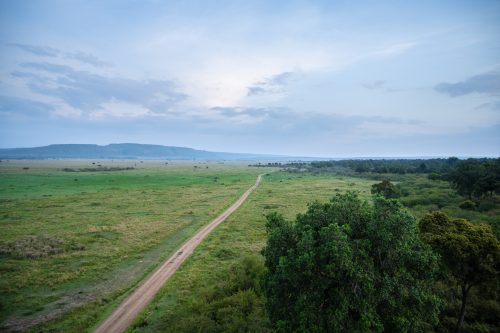
It’s a joy to watch how the environment responds to a change in weather and it helps to paint a bigger picture of just how connected everything is. The lush plains are now home to mega herds of buffalo, moving around in groups of up to 100, all making the most of the long grass in the wetter areas of the Triangle.

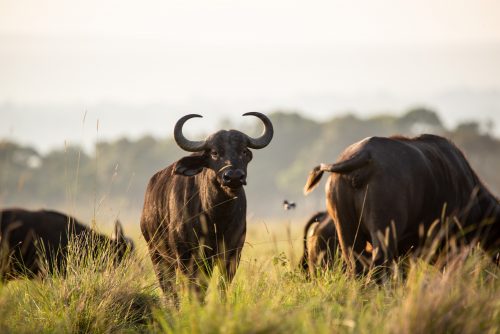
Along with the rains came many wonderful sightings, and we were treated to yet another glimpse of a very familiar leopard, this time in a totally different location. It was none other than the Salt Lick cub, but this time we encountered her by Army Drift along the border and her mother was probably tucked away in the bushes nearby. It’s absolutely mind-boggling just how much terrain these two leopards cover. My first sighting of this pair was at Laga ya Ndovu; some weeks later we encountered them at Picnic Trees around Egyptian Goose area and now by the border. The two have also been spotted as far afield as Kampi ya Mungu. Inhabiting an area this large is very rare but there’s always a sense of anticipation now as you could bump into this dynamic duo just about anywhere.
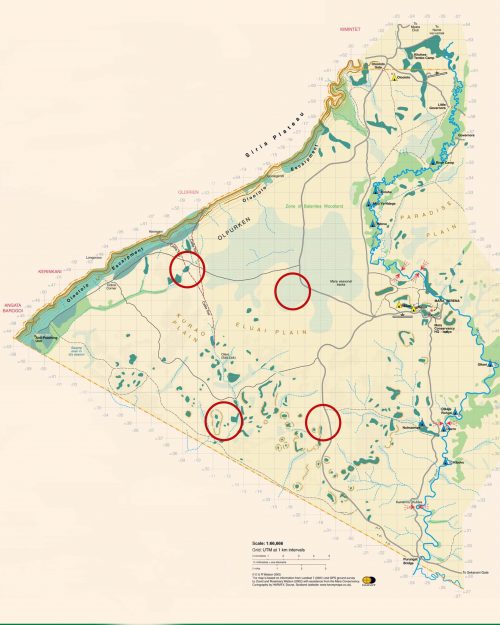


Sadly, while we were at the sighting we heard some unsettling news on the radio. Something horrible had just happened by the Mara River; the leopard cub documented by Robert in last week’s This Week at Angama was killed by Shujaa, the dominant male within that area. It’s always heartbreaking to hear such news, but we mustn’t forget that it’s all part of nature.
Now for some good news: for me, this week was unlike any other as I got to experience the Mara from above, giving me a whole new perspective on this phenomenal ecosystem. With this being my first ever hot-air balloon ride, I had no idea what to expect. Overwhelmed with excitement and thrilled by the prospect of a new experience, I woke up well before my 04h20 alarm.
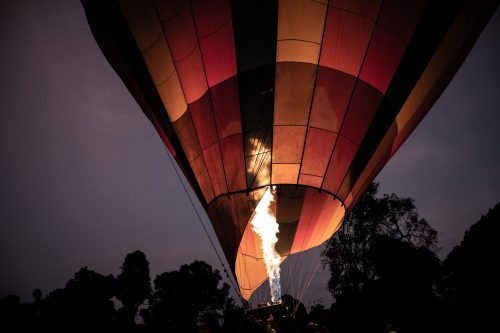
They say a mind stretched by a new experience cannot go back to its previous dimensions. This held true on that early morning. As we began our ascent into the sky at first light, I knew that sheer beauty would follow. Breaking above the tree line and slowly drifting over the Mara River was spectacular.
It was a flight that engaged all my senses, the golden rays accentuated the landscape — this, coupled with hippos grunting below and the smell of the diverse vegetation, made for an immersive experience. The mighty crocodiles and hippos were dwarfed by the Mara River. A powerful force which meanders through the landscape ever so gracefully. Cutting corners as if it was sculpted by the world’s finest artists. Only from the sky, can one fully comprehend the beauty of this landscape.


Slowly hovering over the swamps allowed me to observe the complex and beautiful patterns below, created by the flow of water through the vegetation. An incredible network of channels, almost like the blood vessels of the ecosystem.
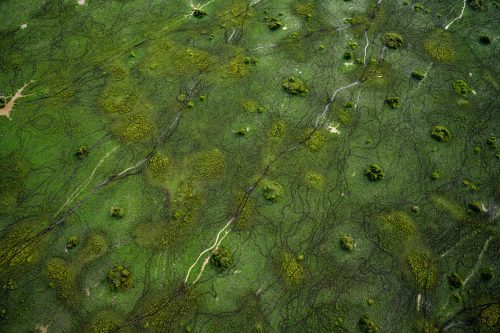
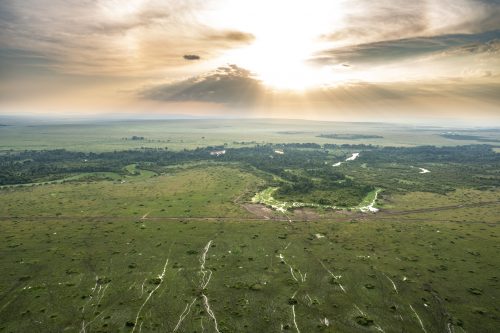
The Triangle’s elephants have been loving the recent rains, which have brought large sections of the marsh to life, giving the Mara a whole new look, bearing a strong resemblance to the wetlands of Amboseli. Elephants enjoy a bit of water and have made themselves totally at home within these parts. Even giants get lost within these vast surroundings.

Since my first Migration, I have always struggled to capture the true scale of the large herds. Even with the widest of lenses, being at ground limits just how much one can capture. However, from the skies I got to witness the Migration like never before, the wildebeest were dotted across the landscape like ants. I know this isn’t the first time I’ve used the phrase: ‘stretching as far as the eye can see’, but I had no idea what it truly meant, until I viewed the herds from a balloon.
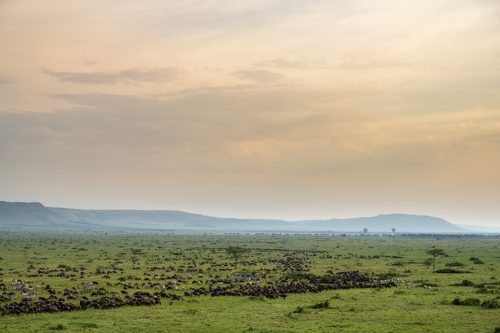
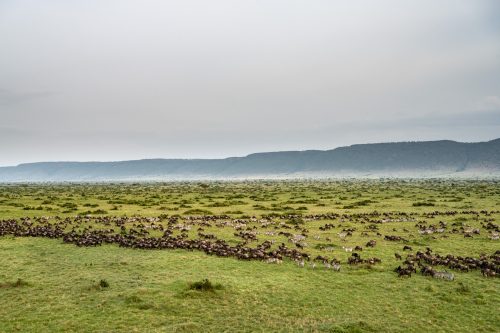
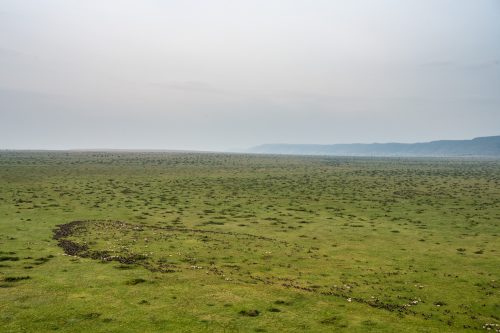
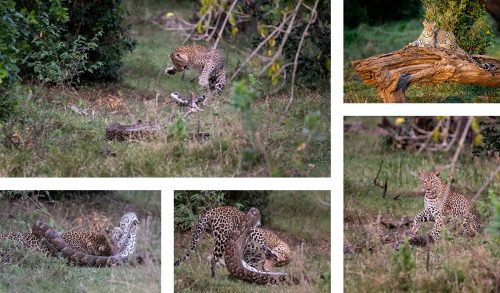
Two years ago guests and Mara-regulars alike witnessed an extraordinary sighting of a leopard and a python battling it out to the death. After nearly being wrapped around by the five-meter long python, the leopard managed to wrangle free and in the end won the fight. It then proceeded to eat the python as a victory feast.
Filed under: This Week at Angama
Subscribe for Weekly Stories
Comments (2):
15 October 2021
What a wonderful post Eric - as much as I love the detail of well captured animal shots, your wider landscape shots are just awesome !
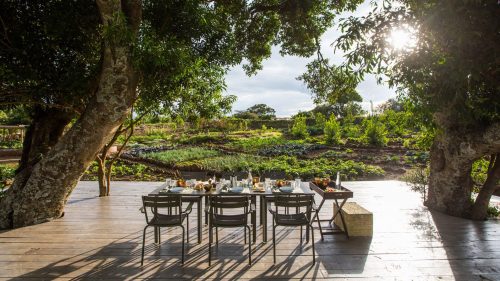
The Angama Shamba